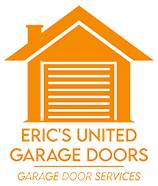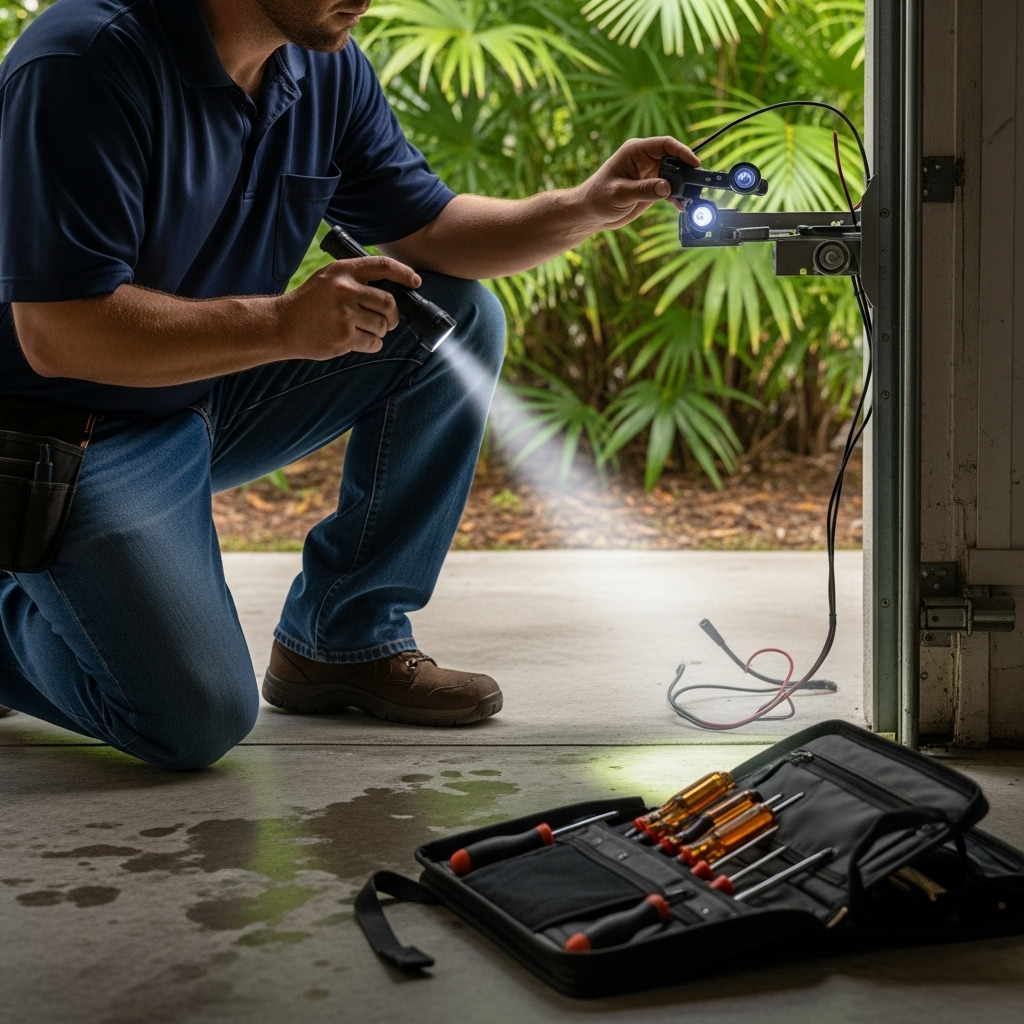Introduction: Troubleshooting with Florida’s Climate and Codes in Mind
When a newly replaced garage door misbehaves, Florida homeowners face unique variables: wind, humidity, salt air, and rigorous code requirements. This troubleshooting guide addresses common issues after installation—noisy operation, refusal to open or close, sensor glitches, balance problems, and water intrusion—so you can pinpoint causes and fix them efficiently. If the problem suggests deeper structural or safety concerns, consider professional garage door replacement or service to restore safe, code-compliant function.
First Things First: Safety
Before any troubleshooting, prioritize safety. Disconnect the opener when testing manual movement. Never place hands near torsion springs or lift cables while the door is under tension. Use proper ladders, eye protection, and secure footing. If you suspect spring, cable, or structural failure, stop and call a professional immediately.
Symptom: Door Won’t Open or Close
Likely Causes in Florida: Power outages from storms, tripped GFCI or breaker, opener lock mode accidentally engaged, misaligned photo eyes, or swollen wood trim from humidity binding the door.
- Check power: verify the outlet, breaker, and any GFCI circuits. Surge events during storms can trip protection devices.
- Inspect photo eyes: remove cobwebs or condensation droplets and realign. Florida garages invite spiders and moisture that interfere with sensors.
- Confirm lock/vacation mode: some openers disable remotes or wall controls; reset per the manual.
- Test manual operation: pull the emergency release and lift. If the door feels heavy or sticks, the issue may be spring tension, track misalignment, or binding weatherstripping.
Symptom: Door Reverses Before Closing
Common Causes: Dirty or misaligned sensors, debris in the track, or excessive opener force sensitivity. High humidity can cause slight expansion in materials, altering clearances and triggering false reversals.
- Clean and realign photo eyes; ensure LEDs indicate a clear path.
- Inspect tracks for obstructions, dents, or fasteners protruding into the roller path.
- Check bottom seal for folds or stiff sections that catch on uneven slabs; replace if necessary.
- Reset opener travel and force limits following the manufacturer’s process.
Symptom: Excessive Noise or Vibration
Common Causes: Loose hardware, dry rollers or hinges, misaligned tracks, or opener mounting issues. Metal expansion and contraction with Florida’s heat can loosen fasteners over time.
- Tighten hinge screws, track bolts, and opener brackets using the correct torque.
- Lubricate hinges, bearings, and torsion springs with a suitable product for humid climates.
- Verify track alignment and plumb; adjust carefully to eliminate binding at transitions.
- Add or reinforce opener support angle to reduce flex and vibration.
Symptom: Door Feels Heavy or Slams
Potential Causes: Incorrect torsion spring tension, a broken spring or cable, or binding due to misalignment. In coastal areas, corrosion on springs and bearings can increase friction quickly.
- Disconnect the opener and test balance. The door should stay near halfway when released.
- If the door drops or shoots up, spring tension likely needs adjustment—contact a pro for safety.
- Inspect cables for fraying or rust; do not operate the door if damage is visible.
Symptom: Gaps, Drafts, or Water Intrusion
Florida-Specific Factors: Sloped or uneven slabs, wind-driven rain, and worn seals. Coastal storms can push water under even small gaps.
- Examine bottom seal contact across the floor; replace compressed or cracked seals.
- Consider a threshold system if the slab is irregular.
- Adjust side/top weatherstripping for consistent, light contact without binding.
- Seal exterior trim to masonry with UV-stable caulk to block wind paths.
Symptom: Rust or Corrosion Appears Quickly
Causes: Salt-laden air, insufficient protective coating, or incompatible hardware. New installations may still use non-stainless fasteners in some areas, which can corrode faster near the coast.
- Rinse the exterior periodically to remove salt residue; dry thoroughly.
- Touch up paint nicks promptly and replace corroded fasteners with stainless or hot-dipped galvanized options.
- Apply light lubricant to moving metal parts and wipe off excess to reduce moisture retention.
Symptom: Remote or Keypad Intermittent
Typical Causes: Weak batteries, interference, or misprogrammed codes. Metal garages and nearby RF sources can reduce range.
- Replace batteries and reprogram remotes/keypads per the manual.
- Relocate the opener’s antenna for better reception; keep it straight and unobstructed.
- Check that the opener’s lock/vacation mode isn’t limiting operation.
Symptom: Opener Runs, Door Doesn’t Move
Likely Causes: Disengaged emergency release, stripped drive gear, or broken trolley. A previous storm surge or jam could have stressed components.
- Verify the emergency release has been re-engaged correctly.
- Inspect the trolley and drive gear for wear; many openers have plastic gears that wear under high loads.
- If components are damaged, consider repair or replacement and verify door balance to prevent repeat failures.
Tuning for Florida’s Climate
Florida’s heat and humidity accelerate wear. Plan quarterly lubrication, hardware checks, and seal inspections. After major storms, perform a quick review before operating the opener. Keep sensors clean and aligned, and maintain clean tracks free of sand or debris. For coastal homes, rinse the exterior more often to control salt buildup.
When Troubleshooting Isn’t Enough
Some problems hint at deeper issues: persistent imbalance, recurrent sensor faults without visible cause, rapid corrosion on structural components, or repeated opener gear failures. These can indicate mis-specified hardware, inadequate reinforcement, or installation errors. In such cases, a comprehensive evaluation may reveal that targeted repairs—or a complete garage door replacement—is the safest path to reliable, code-compliant performance.
FAQ: Post-Replacement Troubleshooting for Florida Homes
Q: My new door is already rusting. Is this normal?
A: In coastal Florida, surface rust can appear quickly on unprotected metal. Address it early with cleaning, touch-up paint, and corrosion-resistant fasteners to prevent progression.
Q: The door reverses at random times. What should I check?
A: Start with photo eyes: clean, align, and look for condensation or insect webs. Then inspect for track obstructions and verify force and travel settings.
Q: Can I adjust torsion springs myself?
A: Springs are dangerous under tension. If you’re not trained and equipped with proper winding bars, call a professional.
Q: How do I reduce noise?
A: Tighten hardware, lubricate moving parts, replace worn rollers, and verify opener mounting. Nylon rollers and proper alignment can significantly reduce sound.
Q: Wind pushes water under the door. What now?
A: Upgrade to a high-quality bottom seal, add a threshold system, and improve exterior caulking around trim to block wind-driven paths.
Restore Quiet, Reliable Operation
With methodical checks and Florida-aware solutions, most issues can be resolved quickly. If you want a thorough inspection, precise adjustments, or a system engineered to withstand humidity and storms, schedule professional garage door replacement or service and get your garage operating safely and smoothly again.

